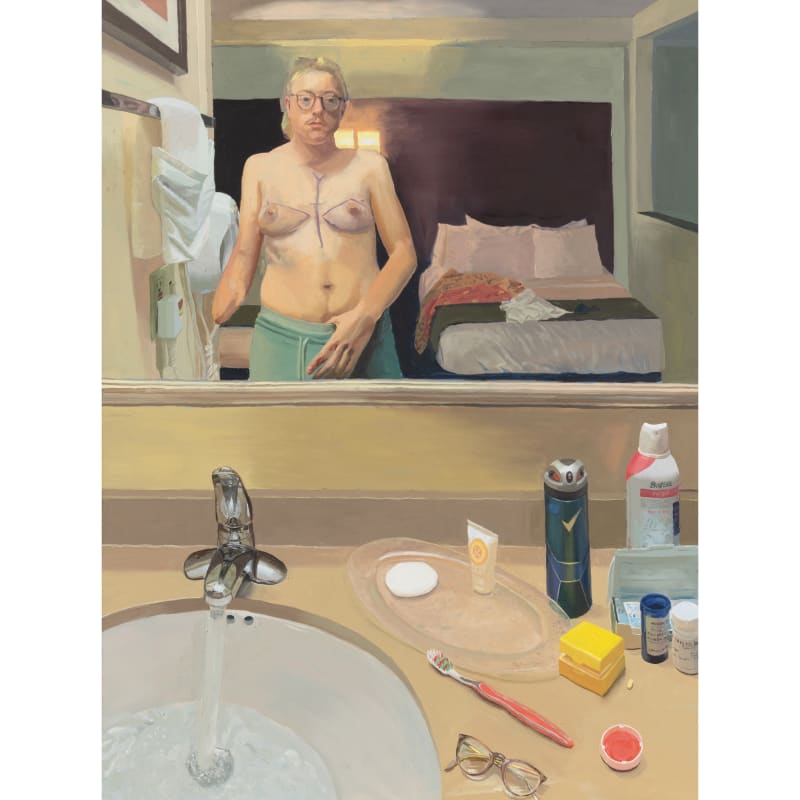Born in 1995, New York-based artist Linus Borgo stands out with his naturalistic and vivid large-scale paintings. Currently in the second year of Columbia University’s MFA program after having received his BFA from Rhode Island School of Design in 2018, he seriously started to paint at 15.
Linus Borgo grew up surrounded by art, spending part of his childhood in Italy.His first encounters with Renaissance art took place at an early age with a grandfather who was a professor of Italian Renaissance paintings and a father who was a connoisseur of art history.
However, a life-changing event marked a turning point in his life and art. In 2014, when he was 18, he lost his left hand and suffered multiple third-degree burns after an electrical accident. He had to undergo multiple surgeries and stay hospitalized, an experience he portrays in his oil paintings. A couple of years after, Linus Borgo started taking testosterone as part of hormonal therapy. In his art, he explores and questions the similarities between disabled and trans identities.
“There are so many intricate complexities between disabled and trans identities to do with controllable and uncontrollable morphing of the body, care, and community, the limitations of the body, prosthetics, surgery, and Frankensteinian bodily construction.” - Linus Borgo
In his former work, Linus Borgo's self-portraits would delve into those ideas through their distortion. He later changed this approach by settling on a naturalistic style, with the body as a study that will no longer hide. It is on the contrary put in the center, emphasized by the lights, the complex compositions, and the daring color variations.
Between January and February 2022, Linus Borgo’s paintings were exhibited at Steve Turner Gallery, in ‘I’ll Grow Back Like A Starfish’. Two of the three showcased self-portraits where the size of Borgo’s himself, the last one being almost twice as big. The art pieces captivate through their bright colors and their compositions, two of them being based on specific paintings. ‘Noli Me Tangere (Nick ties my shoes)’ is for example inspired by the painting of the same name by Corregio. Linus Borgo explored the reference to Christ's resurrection, which resonated with him through the idea of bodily transformation and its intangibility. Many of his paintings, like ‘Autotomy in the liminal realm’ also explore the question of body autonomy for disabled people.

